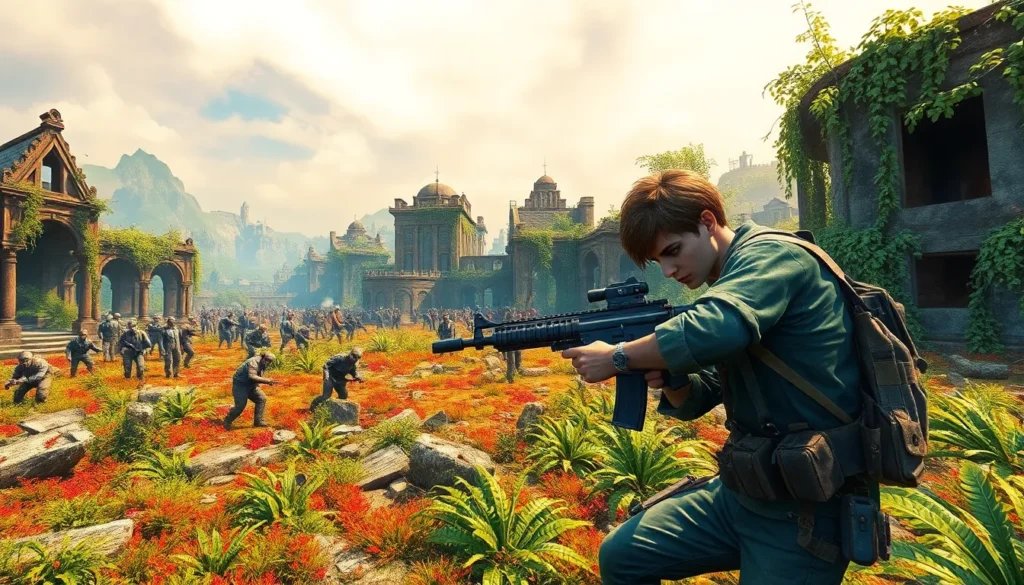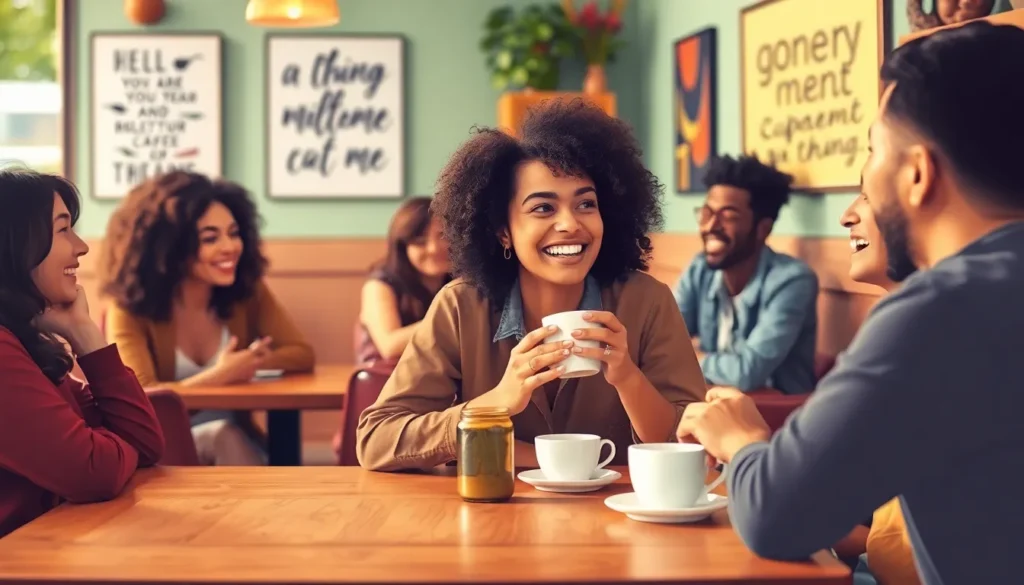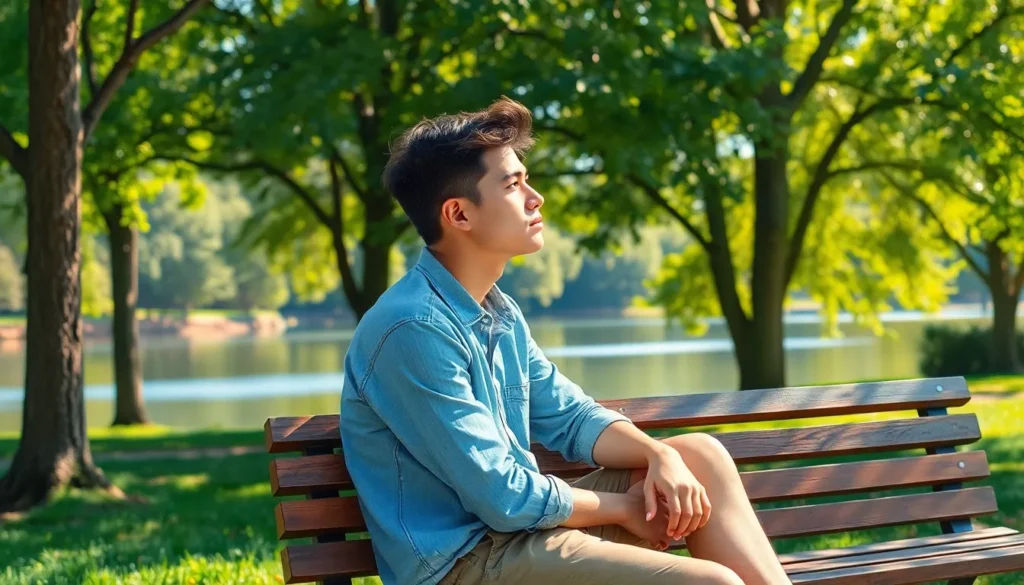In a world overflowing with ideas, finding the right spark can feel like searching for a needle in a haystack—or worse, a sock in the laundry. Whether you’re an artist, writer, or just someone looking to jazz up their next project, inspiration can sometimes be as elusive as a cat in a room full of rocking chairs. But fear not!
Table of Contents
ToggleUnderstanding Drawing Inspiration Ideas
Drawing inspiration involves the process of seeking out ideas, feelings, or experiences that fuel creativity. Artists, writers, and creators tap into various sources, such as nature, culture, or even personal experiences, to cultivate their works.
Definition of Drawing Inspiration
Drawing inspiration refers to the act of deriving creative ideas from various stimuli. Inspiration can stem from visual arts, literature, or everyday experiences, providing a foundation for artistic expression. Organizations and schools often emphasize the importance of nurturing creative thought through exploration and observation. Utilizing these concepts aids individuals in discovering unique perspectives on their projects. Engaging with diverse media creates opportunities for innovation and personal style.
Importance in Art and Creativity
The importance of drawing inspiration in art and creativity cannot be overstated. Artists rely on inspiration to ignite their imagination and transform ideas into tangible creations. Originality thrives when individuals engage with their environment, leading to fresh interpretations and groundbreaking works. Without inspiration, creative pursuits may stagnate, limiting potential. Collaborating with others often enhances access to varied inspirations, expanding the creative process. Cultivating a mindset that welcomes new ideas fosters a dynamic artistic journey and encourages continual growth.
Sources of Inspiration
Various sources fuel creativity, providing rich material for artists and creators. Engaging with these distinct areas enhances one’s ability to draw inspiration effectively.
Nature and Environment
Nature offers endless inspiration through its landscapes, colors, and forms. Observing sunlight filtering through trees evokes feelings of tranquility. Wildlife, with its intricate behaviors, sparks curiosity and wonder. Exploring new environments stimulates fresh ideas, prompting innovative expression. Seasonal changes bring different palettes, influencing artistic themes and moods. Engaging all senses in natural settings fosters deeper connections and insights.
Everyday Life Experiences
Everyday events shape perspectives and ignite creativity. Mundane tasks often hide potential inspiration, such as the sound of rain or the aroma of fresh coffee. Personal interactions carry emotional weight, steering thoughts toward unique narratives. Travel experiences also enhance worldviews, introducing diverse cultures and practices. Observing daily routines uncovers relatable topics, often resonating with larger audiences. Embracing these moments fosters creativity through genuine reflections.
Art and Artists
Art serves as a powerful source of inspiration, drawing from historical and contemporary influences. Visiting galleries introduces unique styles and techniques, sparking innovative ideas. Studying masters encourages exploring different mediums and approaches. Collaboration with other artists facilitates a cross-pollination of concepts, enriching one’s creative repertoire. Literature, film, and music also offer fresh perspectives, showcasing the depth of human experience. Engaging with these forms cultivates an ongoing dialogue about creativity and artistic expression.
Techniques to Cultivate Inspiration
Cultivating inspiration requires deliberate practice and engagement with various techniques. These methods enhance creative thought, leading to innovative ideas.
Mind Mapping
Mind mapping serves as a visual tool for organizing thoughts. It allows individuals to create a structured representation of ideas and concepts. Starting with a central theme, creators branch out into related subtopics. This technique promotes a free flow of ideas, revealing connections between seemingly unrelated concepts. Because it encourages exploration, mind mapping can uncover unique creative paths that spark inspiration.
Creative Journals
Maintaining a creative journal fosters continuous reflection and documentation of thoughts. Daily entries capture moments of inspiration, observations, and insights. Writers and artists use this practice to clarify ideas and track their creative journey. Journaling cultivates a habit of mindfulness, helping individuals remain attuned to their surroundings. Regular review of past entries often reveals patterns and themes that can reignite creative energy.
Collaborative Projects
Engaging in collaborative projects opens up new avenues for inspiration. Working with others allows individuals to exchange ideas and challenge each other’s perspectives. Diverse viewpoints enrich the creative process, leading to unexpected breakthroughs. Artists and writers find that collaboration can spark innovation, as each participant brings unique experiences and skills. Collaborative efforts often result in dynamic creations that reflect a blend of individual talents.
Overcoming Creative Blocks
Overcoming creative blocks involves recognizing and addressing obstacles that inhibit artistic expression. Identifying these barriers and employing effective strategies leads to renewed inspiration.
Identifying Blockages
Recognizing personal limitations proves essential. Common blockages include fear of failure, self-doubt, and external pressures. Anxiety around expectations can paralyze creativity, making it important to confront these emotions. Overthinking processes often stifles spontaneity, urging individuals to reflect on their creative routines. Additionally, burnout from continuous work without breaks contributes to mental fatigue and diminished inspiration.
Strategies for Renewal
Engaging in diverse activities can rejuvenate creative energy. Taking walks in nature allows for immersion in stimulating environments. Experimenting with new mediums or styles refreshes perspectives and encourages growth. Setting aside dedicated time for creativity fosters a relaxed mindset, removing pressure from the creation process. Seeking feedback from peers promotes constructive dialogue, expanding avenues for inspiration. Lastly, practicing mindfulness techniques enhances focus and awareness, creating space for fresh ideas to flourish.
Finding inspiration is an ongoing journey filled with exploration and discovery. By tapping into diverse sources such as nature and everyday experiences, individuals can unlock their creative potential. Embracing techniques like mind mapping and maintaining a creative journal allows for deeper reflection and idea generation.
Collaborating with others not only broadens perspectives but also fosters a vibrant artistic community. It’s essential to recognize and address creative blocks, as overcoming these obstacles paves the way for renewed motivation. Ultimately, nurturing creativity through varied experiences and intentional practices leads to a fulfilling artistic journey.









